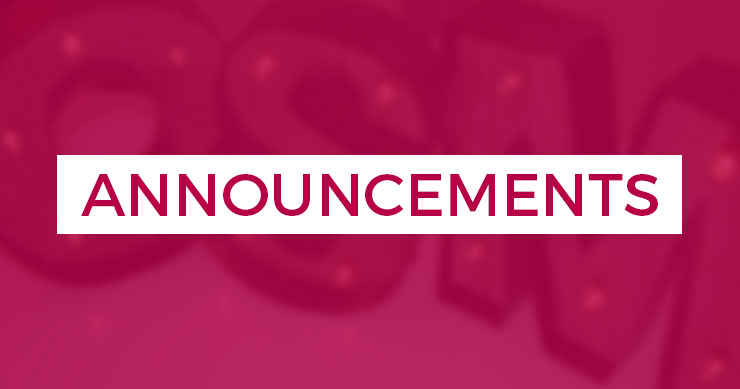
I'm a fake person!
If you follow me on Twitter, subscribe to the Outspoken Blog or hang out at any of the other sites I write for like SmallBizTrends, Copyblogger or Duct Tape Marketing, you may feel like you know me a little bit. You may not have grown up with me or know the name of my first grade teacher (Mrs. Pizzardi), but you have a sense of what it’d be like to grab a beer with me. You know I have horrible taste in both TV and music, that I kickbox regularly, and that I use my Twitter account for equal parts educating and amusing. Because I tweet like a human, there’s a relationship where you’d recognize me in a dark alley or maybe a different blog. And through it, you begin to trust me, my content, and the SEO consulting company I represent more than you would if this connection didn’t exist. That’s how you use social media.
And it only works because I’m not full of shit.
It works because the version I present to you is authentic. When you talk to me, you get Lisa – the good and the bad, the useful and the ridiculous. You get all of it.
Every Monday night at 9pm EST business owners and marketers swarm Twitter to participate in #SocialChat. If you’re not familiar, Social Chat is an hour-long discussion hosted by Alan K’necht and Michelle Stinson Ross where attendees and a guest host talk about all the different aspects of social media and marketing. Last week’s chat was hosted by our friend Hugo Guzman and focused on basic Twitter etiquette and how businesses can avoid common social media missteps.
Here was one of the topic points and part of Hugo’s response from the chat highlights:
Q2. What is the most important thing to keep in mind that is different between personal tweeting & tweeting for a brand?
@HugoGuzman: “That really depends on the nature of your brand (and employment). Some people like @lisabarone have the luxury to tweet as they please and it connects with her audience… Generally, the agreement was that, when tweeting for a brand/business, it is best to maintain a reasonable degree of professionalism. The human connection and conversation is important, and it’s not wise to become overly stiff or robotic, but there’s no need to pour out your hear to your customers, either.”
I get where Hugo was going and I don’t entirely disagree, but can we stop pretending that it’s possible to have a corporate Twitter account? Because it’s not.
I recognize that I tweet differently than a lot of other brands. My tweets are honest, routinely unprofessional, and range in topics from SEO to social media marketing to the killer tacos I just had for lunch. But I still wouldn’t call my Twitter strategy a luxury. It’s a necessity. It’s how the audience around my brand and my content is built.
We are officially beyond the days where you can have a distinct “personal” and “corporate” tweeting style. You must decide who you are and bleed it. From all accounts.
Matthew Ingram nailed it over at GigaOm last week with a post called News Editors Still Don’t Want Journalists to Be Human. In it, he breaks apart the social media best practices document created by The American Society of News Editors, arguing that most of it teaches the OPPOSITE lessons we want to sharing, perpetuating the “don’t be human under any circumstances” approach to social media.
The problem is that approach doesn’t work. It’s tired, it’s boring, and it’s bullshit.
You cannot expect people to form a relationship with you if you’re not willing to share part of yourself with them. This isn’t rocket science, its human relationships 101. Surely, we’re not so void of real person-to-person contact that we’ve forgotten this. To make a friend, you have to be a friend. Otherwise, WTF are you doing?
My tweets are probably more ridiculous than yours. And that’s fine. I would not encourage anyone to mimic the way I tweet. What you need to do is find your own naked superhero. That’s how you should be delineating; it has nothing to do with what jersey you’re wearing.
That doesn’t mean you need to start filling your Twitter account with the most ridiculous news and tweets you can dream up (really. Don’t do that). It means that you need to decide which version of you is the BEST VERSION of you to get your message heard and out. What parts of your personality make you perfectly suited to excel at your job and to connect with people in the process? What version of your real self can you share with people to do your job better? What traits do you need to amplify to increase your value?
Once you know – that’s your naked superhero and the person you should be – whether you’re tweeting for yourself or a company.
If you work for someone else, define your presence and present it to your boss. Explain why this authentic version of yourself is going to make you a much more powerful evangelist for them and how it’s going to generate interest in your brand because you’re GIVING people something. You’re giving them you. Let them see there’s a thought-out strategy here and you’re not just tweeting your lunch because you went off the deep end. If you do that, a company that’s serious about its social media activity is going to at least give you a shot. Maybe they’ll ask to see a somewhat toned down version until they trust you, but they’ll give you the opportunity. If they don’t, consider why you’re there, what you’re doing, and why you’re investing in a company that won’t invest in you back. [#justsayin]
Social media isn’t a free-for-all for engagement. Not at all. It’s about deciding who you are, how you can best support the company and being that. Therein lies your strategy – regardless of whether you’re tweeting as yourself or a representative of a brand. But you’ll never accomplish anything by cutting the YOU from your social media persona. It’s your job to figure out how to blend it all in a way that benefits everyone.
You want to be successful in social media?
- Find your naked superhero.
- Play nice in the sandbox.
There’s your free piece of social media consulting for the day. Because the days of keeping completely separate personal and professional identities are over. It’s all blended and it’s either interesting or it’s not.

